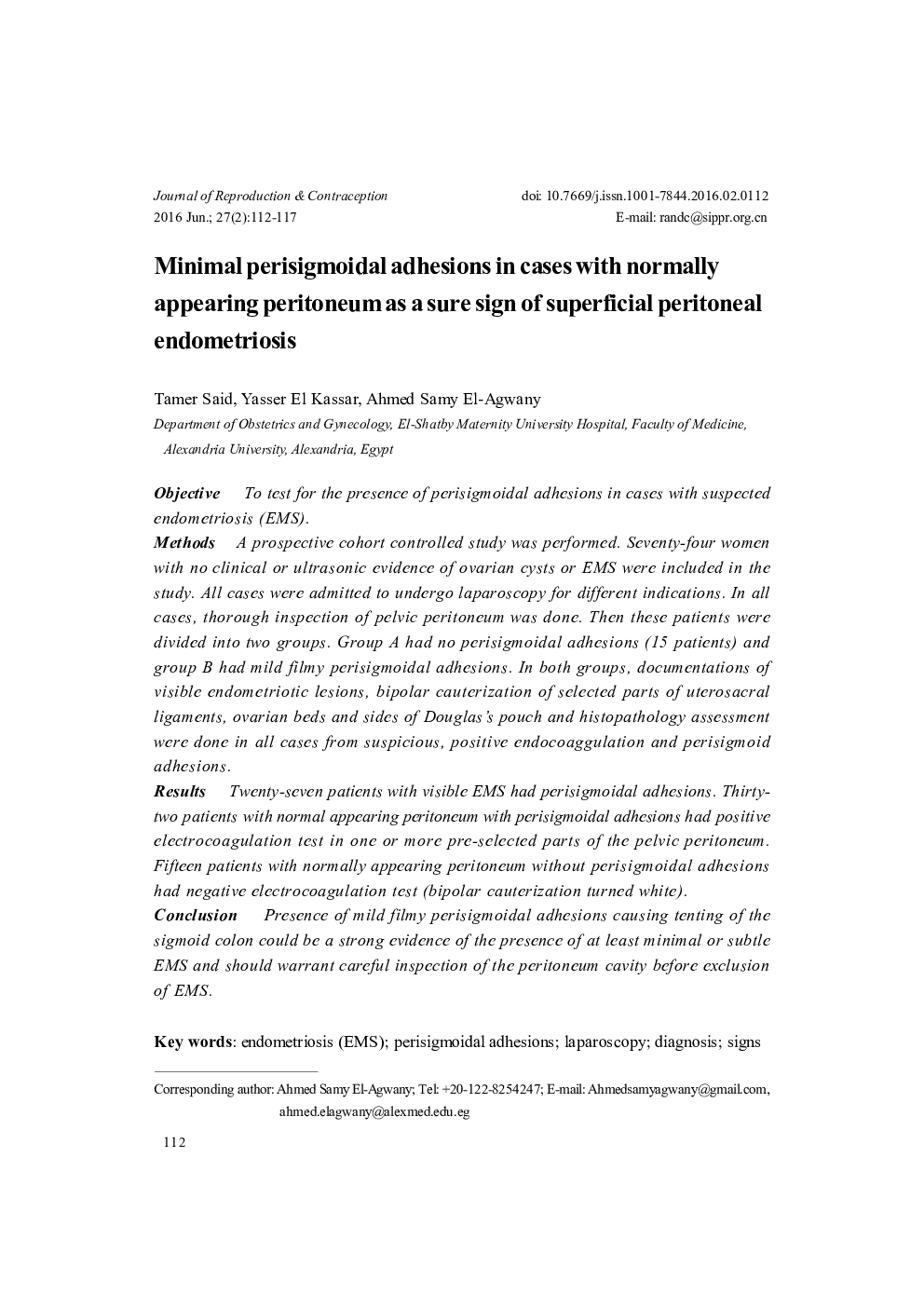| Article ID | Journal | Published Year | Pages | File Type |
|---|---|---|---|---|
| 3963856 | Journal of Reproduction and Contraception | 2016 | 6 Pages |
ObjectiveTo test for the presence of perisigmoidal adhesions in cases with suspected endometriosis (EMS).MethodsA prospective cohort controlled study was performed. Seventy-four women with no clinical or ultrasonic evidence of ovarian cysts or EMS were included in the study. All cases were admitted to undergo laparoscopy for different indications. In all cases, thorough inspection of pelvic peritoneum was done. Then these patients were divided into two groups. Group A had no perisigmoidal adhesions (15 patients) and group B had mild filmy perisigmoidal adhesions. In both groups, documentations of visible endometriotic lesions, bipolar cauterization of selected parts of uterosacral ligaments, ovarian beds and sides of Douglas's pouch and histopathology assessment were done in all cases from suspicious, positive endocoaggulation and perisigmoid adhesions.ResultsTwenty-seven patients with visible EMS had perisigmoidal adhesions. Thirty-two patients with normal appearing peritoneum with perisigmoidal adhesions had positive electrocoagulation test in one or more pre-selected parts of the pelvic peritoneum. Fifteen patients with normally appearing peritoneum without perisigmoidal adhesions had negative electrocoagulation test (bipolar cauterization turned white).ConclusionPresence of mild filmy perisigmoidal adhesions causing tenting of the sigmoid colon could be a strong evidence of the presence of at least minimal or subtle EMS and should warrant careful inspection of the peritoneum cavity before exclusion of EMS.
